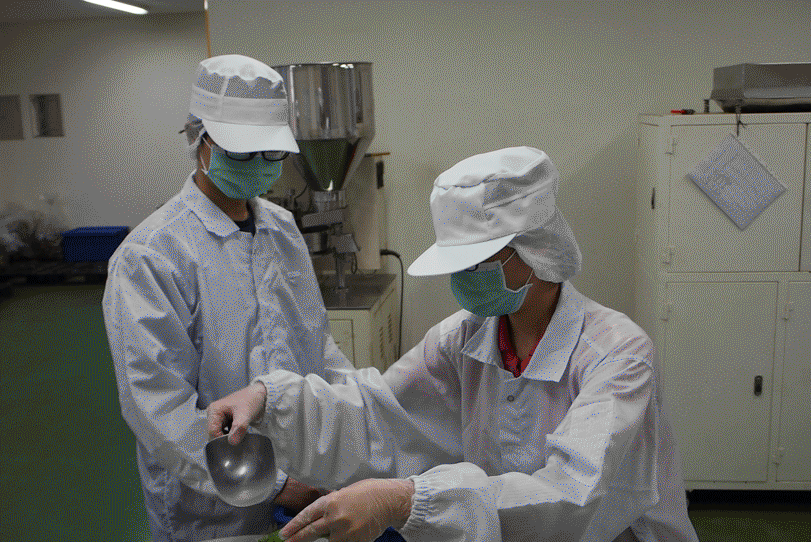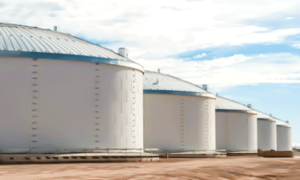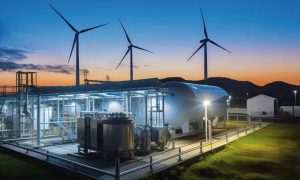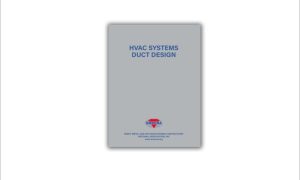The food waste categorisation process presented in this paper has been applied to two case studies to demonstrate its applicability: a brewery (Molson Coors) and a manufacturer of meat-alternative products (Quorn Foods). These food companies were selected because previous contact between the researchers and the industries existed, and also due to their leading position in their product market, large size and therefore a predictable number of different types of food waste produced. A visit to their headquarters took place in June 2015, in which interviews were held with company employees. A questionnaire was used to systematically identify food waste streams and collect relevant data.
Brewery: Molson Coors
This section categorises the different types of food waste generated at one of Molson Coors’ manufacturing sites, a brewery situated in central England. The different types of food waste generated, in order of decreasing quantity are: spent grain, waste beer, conditioning bottom, filter waste and trub. The quantity of waste generated during a year is only dependent on the level of production, since a relatively constant percentage of waste is generated per amount of final product manufactured. The different types of food waste identified are categorised in Table 1 and explained below.
Possible alternative options from the food waste hierarchy are suggested as further possibilities when they are better than the suggested alternative. The particular type of diatomaceous earth in filter waste was not identified; and thus it was considered to be not suitable for animal feeding. N/A means ‘not applicable’ or that the information is not necessary. * The ‘microorganisms’ indicator, from the origin stage, was considered as plant based
Spent Grain
Spent grain accounts for around 85 per cent of the total food waste in the manufacturing plant. It is an unavoidable by-product of the mashing process and is formed of barley and small amounts of wheat.
Currently, spent grain is mixed with trub (in an approximate proportion of 99 per cent spent grain, 1 per cent trub) and used for animal feeding. However, the possibility of reprocessing the waste to adapt it for human consumption was also assessed, as suggested in the previous subsection. Spent grains contain high proportions of dietary fibres and proteins which may provide a number of health benefits. Spent grain should not be mixed with trub if it is intended to use it to produce food products.
Flour can be produced from spent grain following a process that includes drying and grinding. This can be mixed afterwards, with wheat flour and used in a wide range of food products such as bread, muffins, biscuits, etc., increasing their health benefits. Spent grain was considered inedible, as there is no current consumer demand for the products
described above. If technology existed to produce new food products from spent grain, such as those described above; and these products could be sold because there was a consumer demand for it, spent grain would not be considered food waste providing it was used for this purpose.
Other uses for spent grain, apart from food uses and for animal fodder includes pet food, construction bricks, removal of pollutants in wastewater, production of paper, growing medium for mushrooms or microorganisms, extraction and synthesis of compounds (e.g. bioethanol, lactic acid, polymers and resins, hydroxycinnamic acids, arabinooligoxylosides, xylitol, pullulan), anaerobic digestion, composting, thermal treatment with energy recovery and landspreading.
Waste Beer
This waste corresponds to the final product which is not ultimately consumed. There are three reasons as to why this waste is generated:
• Beer left in casks brought back from the food service sector, which accounts for most of the waste in this category. It means an economic loss to the food service sector, not to the brewing company; therefore, it has not been given a high importance by the beer producer.
• Beer rejected because of mislabelling
• Spilled beer in the filling process, which accounts for a negligible amount.
Currently, 95 percent of the waste is sent to farms, and is mixed with other waste to feed animals (pigs). The remaining 5 per cent is sent to sewage.
Ideally, beer left in casks could be reused for human consumption; however, as this comes from outside of the factory, it is difficult to prove that it is not altered and is safe for consumption. If the option of redistribution for human consumption is discarded, the next recommended alternative is animal feeding, which is the current final use.
Beer rejected because of mislabeling is perfectly potable, so it is potentially reusable; however, there is difficulty of extracting the product from its packaging (i.e. emptying bottles and dispensing the product into new bottles). This would require significant employee time or new technologies for automation of the process, but would prevent beer from being wasted.
Alternatively, in England the mislabeled beer can be sold at a lower price to a redistributor of surplus products such as Company Shop, where the label is corrected to meet Food Information Regulations 2014, and providing the beer is compliant with food safety legislation it can be sold at a lower price to the final consumer. Similarly, European legislation that regulates the food information that must be provided to consumers in product labelling is the Regulation (EU) No 1169/2011. Food banks generally do not serve beer and therefore in these cases it cannot be redistributed to charities for people in need.
Alternatively, extraction of alcohol from waste beer by distillation could also give an economic benefit.
Conditioning Bottom
This waste is an unavoidable by-product which settles to the bottom of the conditioner tanks during the maturation process. It is composed principally of yeast, thus it is edible. However, it is not suitable for redistribution for human consumption, as the waste is not processed.
Alternatively, some substances from the conditioning bottom can be used to produce new food products. Yeast can be separated and used to produce foodstuff. In order to recover yeast, the sediment should be filtered and squeezed, and this gives the opportunity to recover cloudy-type beer.
Filter Waste
Filter waste is formed of diatomaceous earth, yeasts and proteins. Yeast and proteins are edible; typically diatomaceous earth (i.e. fossilised remains of diatoms) is considered inedible; however there are two types: food grade diatomaceous earth and inedible diatomaceous earth. In order to choose the best waste management alternative the type of diatomaceous, earth must first be identified. As the current use for beer production is as a filter medium, it will be assumed to be inedible diatomaceous earth.
The waste should be used in animal feeds. However, the type of diatomaceous earth used is not suitable for animal feeding and therefore the next alternative from the food waste hierarchy was suggested: anaerobic digestion to obtain energy. Currently, filter waste is sent to composting (when it is dry) and sewage (when it is wet). As composting is an alternative under anaerobic digestion in the waste hierarchy and sewage is at the bottom of the hierarchy, there is an important opportunity for improvement. Potential additional uses of diatomaceous earth include industrial (filter medium, stabiliser of nitroglycerin, abrasive in metal polishes and toothpaste, thermal insulator, reinforcing filler in plastics and rubber, anti-block in plastic films, support for catalysts, activation in blood coagulating studies, cat litter, etc.), additive in ceramic mass for the production of red bricks, insecticide and anti-caking agent for grain storage (when it is food grade), growing medium in hydroponic gardens and plotted plants and landspreading.
Trub
This is an unavoidable by-product obtained principally in the separator after the brewing process. It is formed of hops, inactive yeast, heavy fats and proteins. Currently this waste is mixed with spent grain and sent to animal feeding, which is the best alternative.
On the other hand, while hops are typically considered inedible, some parts are actually edible; for example, hop shoots can be consumed by humans. Ideally edible parts of the hops would be separated and used in food products and the remaining hops be sent to animal feeding. Yeast, fats and proteins could potentially be used in food products. As well as with spent grain, discussed previously, production of new food products was not selected by using the FWMDT because trub was considered inedible, as there is either no current consumer demand for the products described above or no technology available to undertake the processes required.
Applicability of the categorisation process and the FWMDT
The FWMDT was proved to be useful to classify food waste generated at Molson Coors, as two types of waste were identified to be upgradeable: waste beer and filter waste could be managed in an alternative way in which more value would be obtained.
The assessment of some categories was complex for some food wastes, e.g. edibility for spent grain and waste beer. Spent grain was demonstrated to be edible, but as there is no market for this product for human consumption spent grain waste was consequently further classified as inedible. Research and investment to produce new food products from spent grain is encouraged, and when that takes place the categorization of spent grain will have to be amended. Waste beer was classified as eatable, however safety concerns regarding beer left in casks brought back from the food service sector must be overcome before the beer is reused. Should waste beer be considered safe for consumption but of low quality, ethical issues may arise regarding the benefits of using it for human consumption. Following the FWMDT, redistributing safe food for human consumption is always better from a sustainable point of view than any other alternative from the food waste hierarchy.
The feasibility to send food waste to animal feeding was also difficult to assess. It was found that when considering animal feeding for inedible, plant-based, single or mixed product not in contact with or containing animal-based products, non-catering waste (Fig. 7) each type of food waste should be analysed independently. For instance, trub can be sent for animal feeding but filter waste not because it contains diatomaceous earth which cannot be digested by animals.
Additionally, waste formed principally of yeast could not be strictly classified as plant-based or animal-based. The ‘microorganisms’ indicator was introduced for this reason, but in practice this was considered as plant-based material, since it is not under animal by-product regulations.
Molson Coors also generates a by-product from the mashing process, spent yeast, which is currently sold to a food company nearby to produce Marmite®, a food spread. Since this by-product is sold as planned by Molson Coors to produce a food product, it is not considered food waste according to the definition provided previously, and therefore is out of the scope of this work. If spent yeast were sent for any other use, it would be considered food waste and would have to be analysed.
Manufacturer of meat alternatives: Quorn Foods
This section categorises the different types of food waste generated at Quorn Foods, a manufacturer of meat alternatives situated in Northern England. Two types of food waste were identified: food solid/slurry mix and food product returns, which account for 63 and 21 per cent of the total waste in the factory respectively. The rest of the waste is non-food materials such as cardboard, plastic, etc. The quantity of waste generated during a year is only conditional on the level of production: a relatively constant percentage of waste is generated per amount of final product manufactured. The different food waste types are listed and categorised in Table 2 and explained below.
Possible alternative options from the food waste hierarchy are suggested as further possibilities when they are better than the suggested alternative. N/A means ‘not applicable’ or that the information is not necessary. * The ‘fungus’ indicator, from the origin stage, was considered as plant based.
Food solid / slurry mix
This category of waste includes products being lost through the production line: product falling from conveyor belts, trimmings, product stuck onto inner walls of the industrial equipment, etc. It has the same ingredients as the final product: fungus (mycoprotein), plant-based material, and animal-based products (egg albumen) in low proportions: 2–3 per cent by mass of the final product. It is an avoidable waste as it could be reduced or eliminated with more appropriate industrial equipment.
This waste was considered eatable, as it is generated only because of the inefficiency of the systems rather than to due to problems with the product. However, a more detailed analysis should be carried out to identify all different cases where this waste is generated and assess their state. If uneatable waste (e.g. spilled food onto the floor) is found, this should be classified as a different category of waste, although the new food waste management alternative, animal feeding, for this, would remain unchanged in this particular case.
Considering the previous comments, the most beneficial alternative is animal feeding, which is the option currently followed by the company. Unfortunately, this does not provide any economic income at present.
An investment in improvements in the industrial equipment would reduce the amount of food wasted in this category. Alternatively, the waste generated could be recovered and used to produce more final product.
Food Product Returns
Food product returns is the final product which cannot be sold to the final consumer for a number of reasons, including incorrect formulation, no traceability, packaging errors, etc. It has the same ingredients as the final product: fungus (mycoprotein), plant-based material, and animal-based products (egg albumen) in low proportions: 2–3 by mass of the final product. It is an avoidable waste as it could be reduced or eliminated with more appropriate manufacturing practices.
This waste was considered eatable, as it corresponds to the final product. However, a more detailed analysis must be carried out before redistributing the food for human consumption in order to identify all different cases where this waste is generated and assess their state. If uneatable waste is found (e.g. its use-by date has passed), it must be classified as a different category of waste and this will allow a bespoke solution for this type of food waste. In this case, since the product is packaged, there is no risk of uneatable waste contaminating eatable waste.
Conclusions
The food waste categorisation and management selection flowchart (i.e. the Food Waste Management Decision Tree) discussed in this paper facilitates the selection of the most sustainable food waste management alternative, with the objective of minimizing environmental impacts and maximising economic and social benefits. The categorisation is intended to be easy to apply, facilitating identification of the type of food waste generated, and its link with the most appropriate food waste management alternative. This methodology has been illustrated with case studies from two large UK food and drink manufacturers. Their food waste types have been identified and their existing waste management practices compared to the proposed alternatives. It was found that a detailed breakdown of the types of food waste provides significantly better results than general itemisation, since bespoke solutions can be used for each food waste.
Unfortunately, the alternatives at the top of the food waste hierarchy are applicable to fewer food waste types than those at the bottom. Consequently, a range of solutions is required for a tailored treatment of each food waste type. A clear example of this is the reduction in the previously widespread use of food waste for animal feeding. This is due to stricter regulation that has resulted in fewer types of food waste that can be used to feed animals. Health and safety concerns influence legislation on food waste management, but excessively zealous bans of food waste management options results in the unintended consequence that less advantageous alternatives are more commonly used. Regarding the animal feeding example, there are initiatives to change legislation and allow more types of food waste to be fed to animals.
It provides an easy way to classify food waste in a business or a region to assess progress in management and sustainability and measure against other companies or areas. In order to do that, firstly a clear definition of food waste must be agreed, the boundaries of the system to analyse must be delimited, and afterwards the food waste types can be identified and quantified.
Evaluating the relative merits of waste management alternatives is a complex task. The factors determining which solution is more convenient are difficult to assess and sometimes even difficult to identify, including yields of the processes, proximity of waste management facilities, tax regulations, and demand for by-products, amongst many others. As a consequence, the waste hierarchy should be applied to every type of food waste identified independently, rather than to food waste as a whole, and undertake an exhaustive analysis for each food waste. To meet this challenge the authors are developing an analysis method and associated figures of merit to allow quantitative comparison of waste management alternatives, with a focus on environmental impacts, as an improvement over the current, qualitative approach.
Case study authored by:
Guillermo Garcia-Garcia, Elliot Woolley, Shahin Rahimifard, James Colwill, Rod White, Louise Needham
For more details,
visit: https://link.springer.com/article/10.1007/s12649-016-9720-0#enumeration
Email: E.B.Woolley@lboro.ac.uk
Cookie Consent
We use cookies to personalize your experience. By continuing to visit this website you agree to our Terms & Conditions, Privacy Policy and Cookie Policy.















